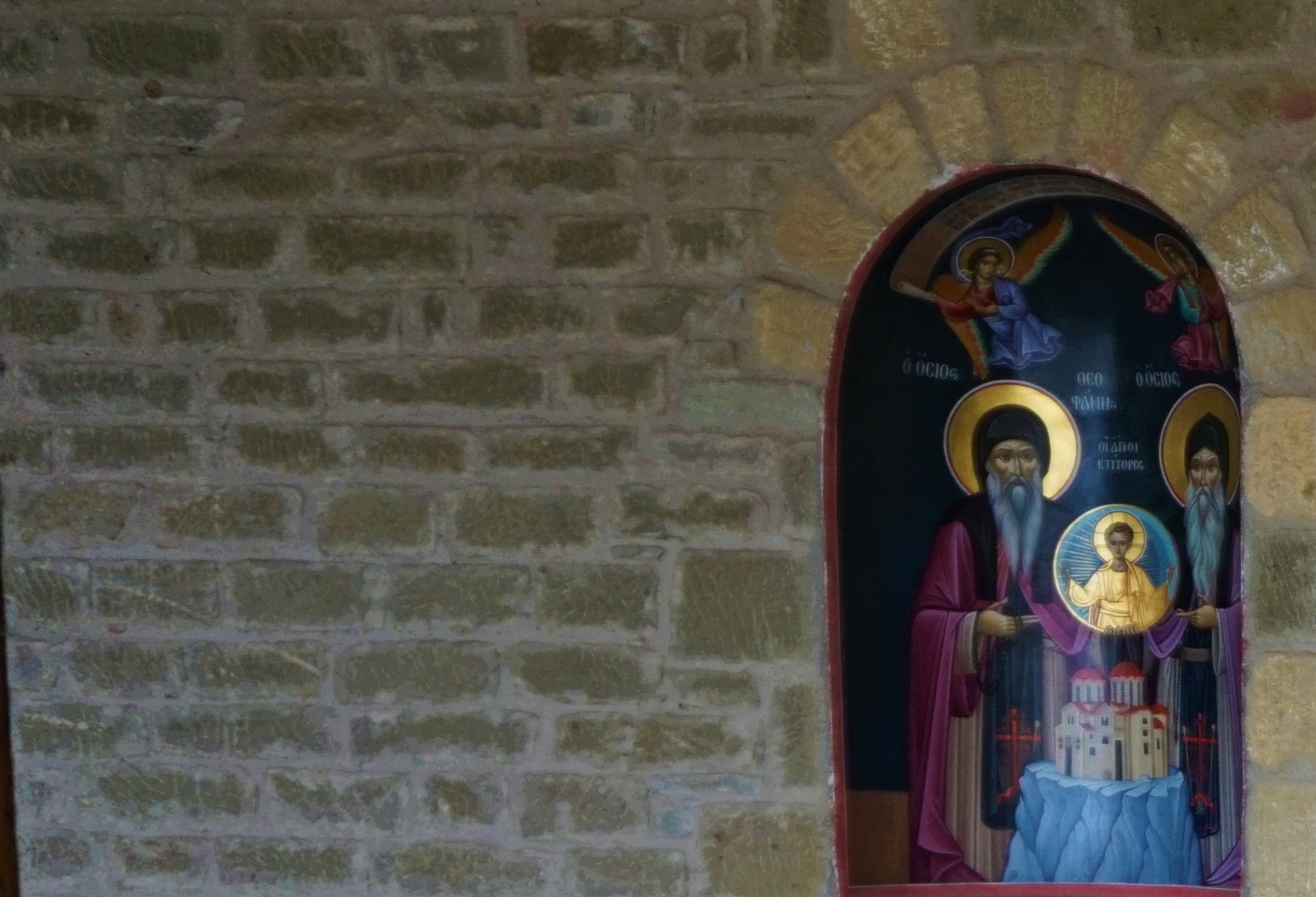In the 11th century we have the fifth period, a new chapter, in church history. The state church was divided into Eastern and Western, the Eastern Orthodox Church and the Western Catholic Church because of the ambition of the heads of the two churches to become the first among two equals.
11. Travel Greece with a Bible in Your Suitcase | 4th Period in Church History | 5th – 9th Century
The Iconoclastic Controversy began as a conflict within the church which developed into a civil war and in the next centuries, the 5th and 6th century mostly, this situation in the church became a real civil war and the battle of that civil war, the battle field, was the Middle East.
During that time, strong Judaic influence in the church was totally aniconic. So, Christians fought severely among themselves about the images, the worship of them and how the images could betray you.
Also, at the same time in church history, a personality was born in the Center of Asia in the Middle East, in the City of Mecca. He was Mohammed, born in the year 571 AD.
When he was forty years old, at the year 611AD, this man accused Christians of polytheism, because of the Doctrine of Holy Trinity, and he called them idolaters because of the images.
Mohammed promoted a new movement for coming back to the pure religion of Abraham.
The main teaching of Islam is to go back to the pure religion of Abraham.
So, according to Mohammed, Christians were the ones who destroyed the message of the god, the teaching of the great prophet Isa, Jesus, who was the one who had to be sent according to the gospels for correcting all the destruction the followers of Jesus did to His message.
Islam was born in the middle of the civil war of the Christians and in the middle of their battle field. Until even today, Islam is the major threat against Christianity.
Rapidly, because of the aniconic promotions of Islam, a lot of Christians who hated the images were incorporated into the Islamic movement and it became so strong that within thirty years after Mohammed started his preaching, at the year 640 AD, they had, with their weapons, wiped out the images in all the Middle East and Northern Africa. This is the time when major Christian centers like Antioch, Jerusalem, Alexandria, Carthage, Cyrene, and many other Christian cities with big, big Christian populations, were lost forever.
At the year 711AD the Muslims entered and completed the conquest of Spain and 20 years later at 731AD had conquered almost half of France. They were stopped in Poitiers, France, by Charles Martel.
The problem of the icons, of the images, was very big and became bigger and stronger in the Byzantine Empire. Emperor Leo the Wise, considered the worship of the images in the church a new style of idolatry in the church and decided to remove them. The situation in the empire was terrible. The conquest of all the eastern and the southern provinces of the empire made the situation even worse.
The conquest of Egypt was a terrible shock for the empire. For centuries and centuries Egypt was the supplier of many cheap and plentiful goods, among them the writing material papyrus which was very cheap and plentifully produced in Egypt. Suddenly the empire was left without writing material, having as an immediate result the increasing illiteracy in the empire and the church. The only writing material which remained was the parchment made of goatskin. The time of the process when the animal was slaughtered to when his skin was turned into a page, was long, more or less a year. Not only books, but even the pages became very rare and very expensive.
In the 9th century, the 7th church council, The Ecumenical Council, decided to face the lack of books in the church, not because of a Christological issue but due to the increasing illiteracy. This is the last council accepted by both the eastern and the western church, because up to this time they were one state church. The result, the conclusion of that council, was a desperate need for art to come back, but not to create idols and objects of worship. Art was needed, to come back, to become the producer of books for illiterate people. And so, art came back into church buildings. We had, for the first time, iconographic programs telling stories, instead of portraits of martyrs. We also had new art, a new style, in art. Up to this time the most advanced painting was classical and naturalistic art.
But the 7th Ecumenical Synod accepted only the paintings in the church, not the statues. Not only because it was more difficult for a statue to be made but also because the statues brought to the mind of many the old religion stronger than the paintings. The new style of painting had a purpose, not for the praise of the beauty of this fallen world, nor for the beauty of the human body, but to deliver the message of God – to depict spiritual figures and the spiritual kingdom of God. The artists drawings of classical and naturalistic images supposed that the spirit of the light stood outside enlightening the board. However, now the three-dimensional representation of the human body from the classical/naturalistic periods was now replaced by a spiritual presence. For that reason, the figures of the human body were considered to be springs of spiritual life itself. Purposely, the painters now refused to paint shade and shadow to their art boards. This is why Byzantine art is considered to be the first modern art in art history. The figures of people lost the third dimension. The sense of perspective became flat. Proportions were lost. Abstraction came back into art but for philosophical reasons now. Art served the church. Still today, in the Eastern church, an icon is not just an artifact but it is venerated as a book which must be read – a book where we don’t only see the actual event, but at the same time we can read the doctrine. And this is the art we anticipated seeing at the monastery – we looked forward to reading icons.
Briefly this is the church history up to the 9th century.
9. Travel Greece with a Bible in Your Suitcase | 2nd Period in Church History | 64AD-313AD
The second period in church history is the period of the persecutions. It overlaps a little bit with the first period and starts in the year 64AD when Nero ordered the first persecution against the Christians, making an official distinction between the Christians and the Jews. Until 313AD, it is a period of severe persecution against the Christians. The reason for the persecution was not that they believed in Christ.
During the Imperial Roman period we have the culmination of a phenomenon, which started by Alexander the Great, called syncretism. Alexander was the king and he had a totally different idea about who is the wise king. Alexander studied and considered the wise king, obviously, under the influence of his famous teacher Aristotle. Aristotle said, wise is the king who does not destroy a culture to impose his own culture but wise is the one who can find the positive elements of the different cultures to build the super culture. So, his suggestion was to preserve cultures and marry cultures to produce a super culture, in all the fields of life.
In this second period of church history Christians considered persecution their test of faith, of love to Jesus and of their unique opportunity to be faithful to direction, (Kostas didn’t like to say the word command) given through the New Testament about loving even the enemy. So, for these Christians persecution, a test of their faith, was an exercise to become more faithful, and more loving people, even toward their executors.



